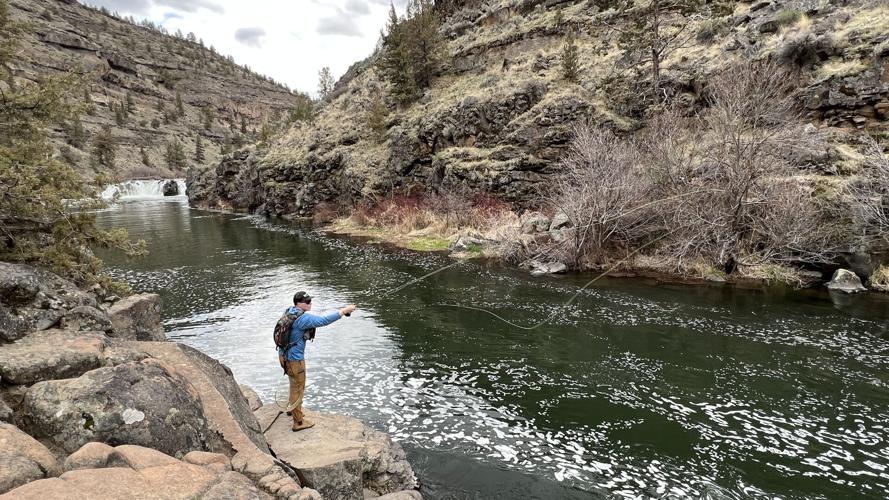This article was published on: 04/10/23 2:35 PM
By Michael Kohn
For the fifth year in a row, the Oregon Department of Fish and Wildlife won’t allow anglers to fish for spring chinook on the Deschutes River.
Fishing for spring chinook on the Deschutes has not been permitted since 2018. ODFW said over the last several years only about 100 to 300 wild adults have returned to spawning grounds in the Warm Springs River, a tributary of the Deschutes River.
“The closing means that Central Oregon residents will again not be able to participate in the popular and productive bank fishery at Sherars Falls where anglers have a very reasonable chance of hooking a Spring chinook,” said Sarah Cloud, executive director of Deschutes River Alliance, a nonprofit.
While they are few in number, some Chinook could make their way up the Deschutes River as far as Big Falls, near Lower Bridge west of Terrebonne, said Jerry George, district fish biologist for ODFW. The Crooked and Metolius rivers are also options for them after they have been brought around the Pelton Round Butte hydroelectric complex, he said.
“While Steelhead Falls is certainly a challenge to fish and an impediment, it is thought that at some flows fish could ascend Steelhead Falls and get a few miles further upstream to Big Falls, which is a barrier what we consider the uppermost extent of Chinook salmon and summer steelhead distribution as far as the Middle Deschutes goes,” said George.
The recent returns of spring chinook are significantly down from just a decade ago when ODFW said around 500 to 1,500 wild adults made their way up the Warm Springs River. In the early 2000s, the numbers ranged between 1,000 to 2,700 wild adults.
ODFW fish biologist Jason Seals said a combination of factors is impacting the returns of the spring chinook.
“Conditions for adult success in the Warm Springs River are likely limited because of drought and elevated water temperatures in the Warm Springs River during over-summering of adults,” said Seals.
Cloud attributes the low numbers to a disease organism in the fish that is harming their health. The presence of the organism is a result of excessive nutrient enrichment into the lower Deschutes from Lake Billy Chinook, she said.
All spring chinook carry multiple pathogens. These pathogens accelerate when the fish are exposed to elevated temperatures in the Warm Springs River during the summer prior to spawning.
“If water conditions go from cool to warm in these pools where they are spending those two months, those pathogens grow and can be lethal,” he said.
ODFW will permit fishing for hatchery spring chinook on the Hood River from April 15 through June 30, with the run expected to peak in late May. All wild chinook salmon must be released unharmed.
Deschutes River anglers can currently cast a line for trout north of the Warm Springs Reservation Boundary. The entire river will open for trout on April 22.
ODFW said an announcement on fishing for wild steelhead in the Deschutes River is expected next month when data on fish returns become available.




